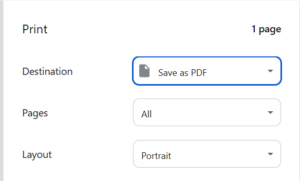Hypothesis LMS app users sometimes look for ways to assign multiple documents simultaneously, either to compare the two documents, or to assign various student groups different documents as part of a single assignment. While the Hypothesis file picker doesn’t support selecting multiple documents as part of the same assignment, there are several workarounds instructors can use depending on their goals for the assignment.
Key techniques you’ll need
While you can use live webpage URLs in a Hypothesis assignment, there are potential disadvantages. One issue is that Hypothesis doesn’t save the content of the website; we always show the site as it is more or less right now. This means if the site changes its content or becomes unavailable, those changes will display, rather than the content of the site at the moment you made the assignment. In addition, there’s no good way to display two URLs in the same browser tab.
One way to work around these restrictions is to save a PDF of the website and use that PDF in your Hypothesis LMS assignment. The easiest way to do so would be to open the site in your web browser and use the browser’s Print function (usually by pressing CTRL-P or CMD-P, depending on your browser). Once you’ve entered the printer dialogue you should be able to select something like “Print to PDF” as one of your printer options.

If you want a slightly nicer final document, most browsers contain a “Reader” mode or view (Safari directions; Firefox directions). Enable this view and then print your document to automatically format the web page for a better reading experience.
There are a few reasons why you may want to combine multiple PDFs into a single document; you may wish students to compare multiple documents as part of a single assignment, you might wish to assign different documents to different groups, or you may wish to create a collated PDF consisting of individual student submissions.
If you have a PDF editor like Adobe Acrobat Pro or ABBYY FineReader the process is typically documented on the software’s website. Otherwise, searching for “merge PDFs” online will turn up many free services that offer to merge your PDFs into a single document. One online tool that offers a free service to merge PDFs is Smallpdf.
If combining student submissions, consider:
- Asking students to submit their papers in PDF format.
- Being cautious with online services that may store student work, as opposed to standalone services that save the documents directly to your computer.
Once you have multiple documents combined into one PDF, use thoughtful annotations to help bookmark the beginnings of the various documents and guide students to the correct paper matching their requirements.
One technique would be to annotate the title of each individual document and use a tag on the annotation like “article 1”, or “paper: Chris Evans”. Students can then use the Search functionality in the Hypothesis Sidebar to find the tagged annotations. Have them try terms like tag:"article 1", tag:article, or tag:paper.

When to use our suggested workarounds
In some instances, you may want a whole class annotating multiple documents together. You can facilitate this by combining multiple PDFs into a single document and assigning that document to the class.
To help students navigate the document, add some bookmark annotations to the start of each individual document inside the larger document. You can also encourage students to tag their annotations with the title of the document they’re currently annotating (or an agreed-upon shorthand for each document) so that it’s easy to know which document the annotation applies to when filtering annotations by tag, viewing an export of the annotations, or viewing the annotations in a resource like the Hypothesis Notebook.
A common use case is to use multiple documents, where each document is assigned to a different group in your class. While Hypothesis won’t be able to show each group just their own document, after combining multiple PDFs into a single document you can add bookmark annotations to help each group navigate to the correct document. Just make sure, in the Hypothesis group associated with the correct LMS student group, to only add the bookmark annotation to the single document that group needs to annotate. This will help them quickly locate the correct document and make sure they don’t annotate the wrong article.
If you want to have each group keep their annotations private from all other groups, use our Hypothesis LMS Groups integration. If, however, you’d like to end up exposing each group’s annotations to the whole class at the end of the assignment, consider teaching students to use tags to create reading groups in Hypothesis.
While Hypothesis doesn’t support the ability to show multiple URLs in the same browser tab, you can use our instructions to print a web page to a PDF, and then follow our other guidance above depending on the goals you have for your assignment.